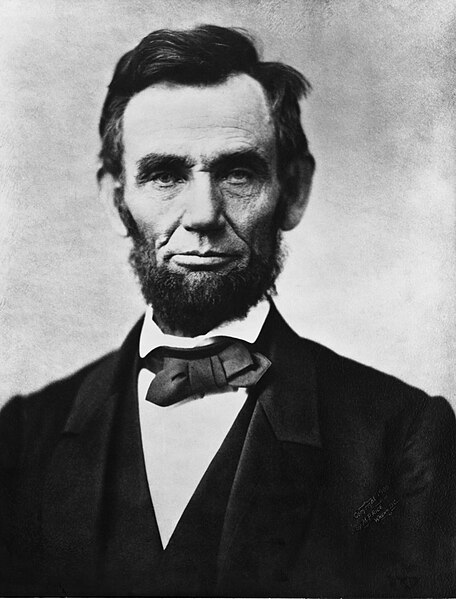
Don’t read Lincoln by Gore Vidal unless you want to get totally sucked into the story and history of the Civil War. This historical novel is so detailed, well-written, and compelling that you will add dozens of books to your “must read” list and it will consume all of your free time. You will interrupt your reading as you check out photos of the main players on Wikipedia. You’ll take a breather by watching the Ken Burns Civil War series--over a plate of crabcakes. Special order primary resource books like the diary of John Hay from the public library. Scour your house for your old, stolen high school history textbooks. Thank you for my new obsession, Mr. Vidal. I am getting nothing done, dishes are dirty, weeds are two feet tall, dogs are neglected and starving. My house smells like Washington D.C. in 1862.

Is this a positive endorsement? Absolutely! Using journals, diaries, letters, and countless other primary sources, Mr. Vidal plunks you right in the middle of cabinet meetings, dinner conversations, and carriage rides taking place with the likes of William Seward, John Wilkes Booth, Salmon P. Chase, and of course Lincoln himself. We spy on the personal tragedy of the Lincolns when their son Willie dies of typhoid. We snicker as we find ourselves party to the indiscretions of politicians seeking prostitutes. We worry about our Lincoln as he travels about town without bodyguards. And we roll our eyes as Mary Todd Lincoln goes on yet another spending binge and buys a $10,000 rug for the White House during wartime. (By the way, Lincoln tells her exactly what we’re thinking: That money could have paid for 10,000 blankets for our soldiers!)

We’ve all read about the Civil War in one way or another—at the very least in high school. Vidal’s Lincoln begins when Old Abe arrives in Washington for his inauguration and ends when he dies. For the most part, we know what happens in between—secession, bloody battles, emancipation -- you know the rest. But in Vidal’s telling, the men and women of the war become flesh and blood as we pore through the pages of this book. With a simple turn of phrase, Vidal creates so much character for these people that reading this book feels like watching a movie.
We don't see much in the way of battles, but we do see plenty of the clockwork of Washington politics. Reading this book is like watching The West Wing--lots of interpersonal action and jockeying for position. I'm sure Aaron Sorkin had Abraham Lincoln in mind when he created the folksy-intellectual Jed Bartlet.
We don't see much in the way of battles, but we do see plenty of the clockwork of Washington politics. Reading this book is like watching The West Wing--lots of interpersonal action and jockeying for position. I'm sure Aaron Sorkin had Abraham Lincoln in mind when he created the folksy-intellectual Jed Bartlet.
This story is told from the point of view from numerous people surrounding the Lincoln White House (figuratively and literally). We are privy to their thoughts, feelings, and motivations. The one person who remains a mystery, though, is Lincoln himself, whose point of view is conspicuously missing. The personality of Lincoln is revealed entirely through his words and actions, plus through the views of others. This is the best way to learn about this compassionate, brilliant, and yet mysterious man.
There are two love stories in Lincoln. One subtle story line is between Lincoln’s secretary John Hay and Kate Chase, the celebrated daughter of Secretary of Treasury Salmon P. Kate agrees to marry Governor William Sprague to help further her father’s career. When Hay indirectly mentions his previously unspoken affection for Kate, she responds, “There was no time, ever, for us….There is not much time for anyone, really. We must all move with such haste toward…our goals.”
Just as this unfulfilled love is extinguished by the ambition of the daughter and the plague of war, so is the affection between Abraham Lincoln and his beloved Union—the other love affair. For almost five years in office, he struggles to hold that Union together, finessing every move and appointment, risking failure and hatred for what he believes is a solution that will keep the Union together--until finally he wins the love of the Union at the war’s end. And then the love affair is tragically cut short by his untimely death. As Kate said, there was no time, ever--for a love between the Union and Lincoln to last.
Lincoln might be a tough book to read. It’s long, and very dense, and at the start you already know he dies in the end. But you need to read it carefully because every word promotes plot (every intrigue and manipulation), character (each eyebrow raise and twitch), or setting (all the mud and swampy stink). There isn’t a word wasted, and there are a lot of words in this book.
Political intrigue. Backstabbing. Love triangles. Indiscretion. And a stinky, smelly swamp. Gore Vidal’s Lincoln has something for everybody.
*All photo in public domain with the Library of Congress.


I'm reading it now...and loving it. It's hard to feel any sympathy for Kate Chase though. She comes across as a cold calculating maciavellian manipulator.
ReplyDeleteOh, I agree with you about Kate Chase. I didn't find her very likable, but I do find John Hay extremely likable. And in spite of his poor choice of romantic flame, I was rooting for him. I think he won in the end, though, historically speaking. Thanks for the comment, and enjoy the rest of the book!
Delete